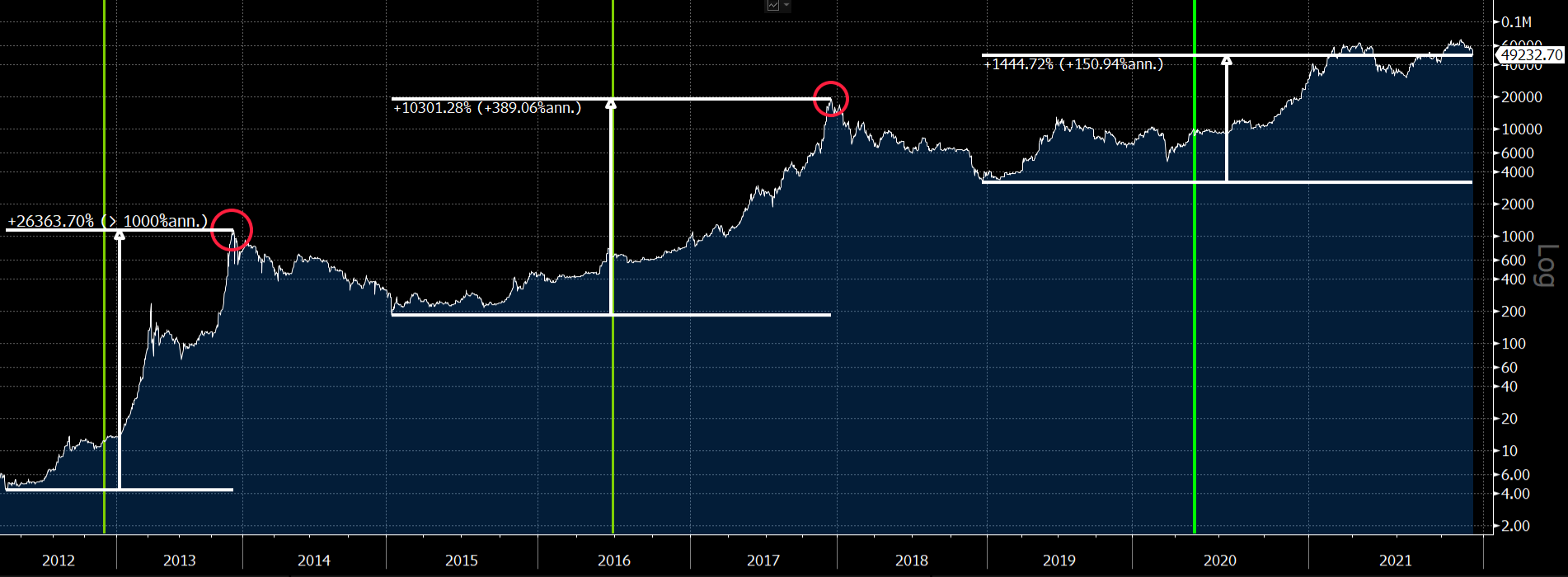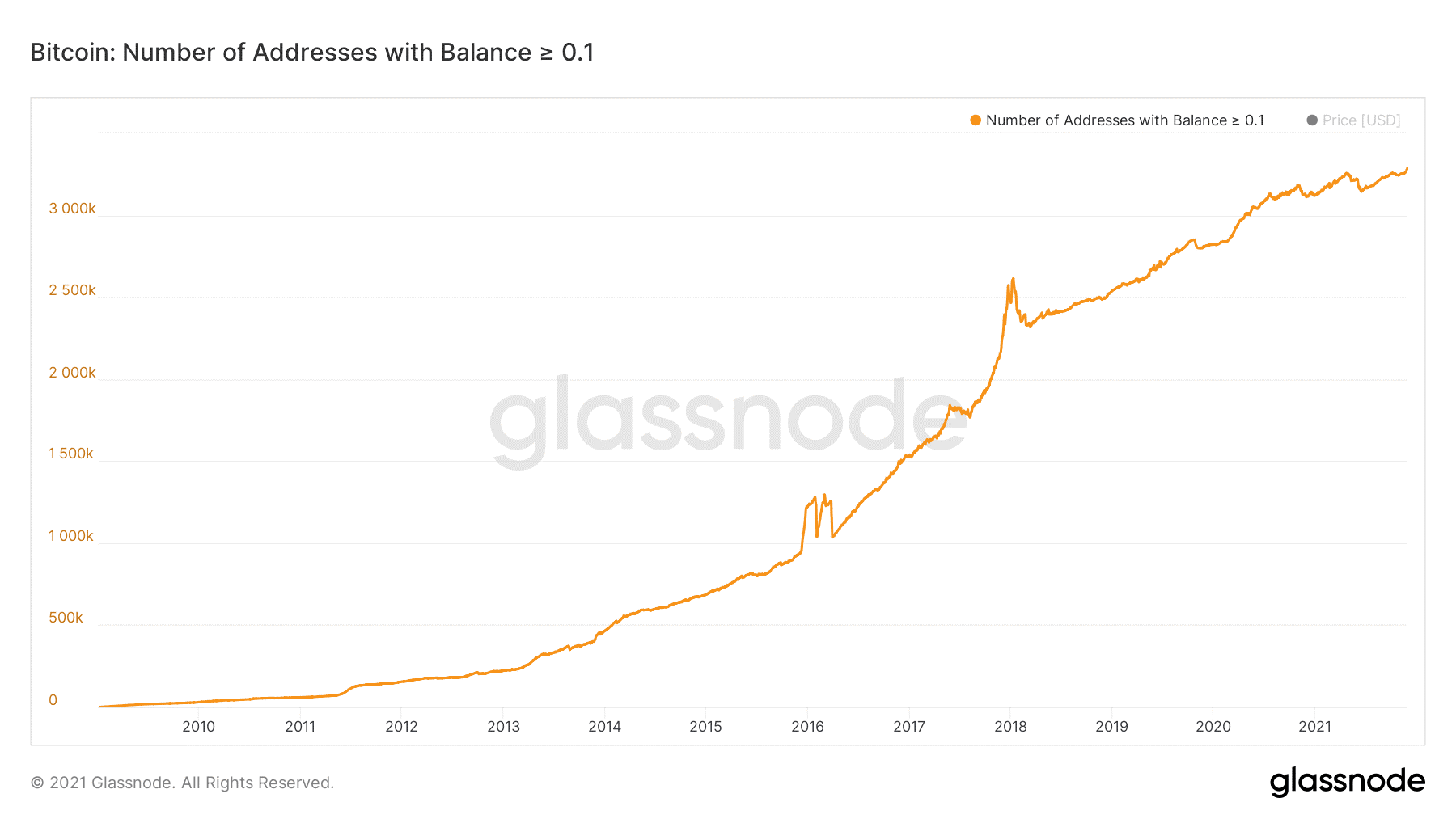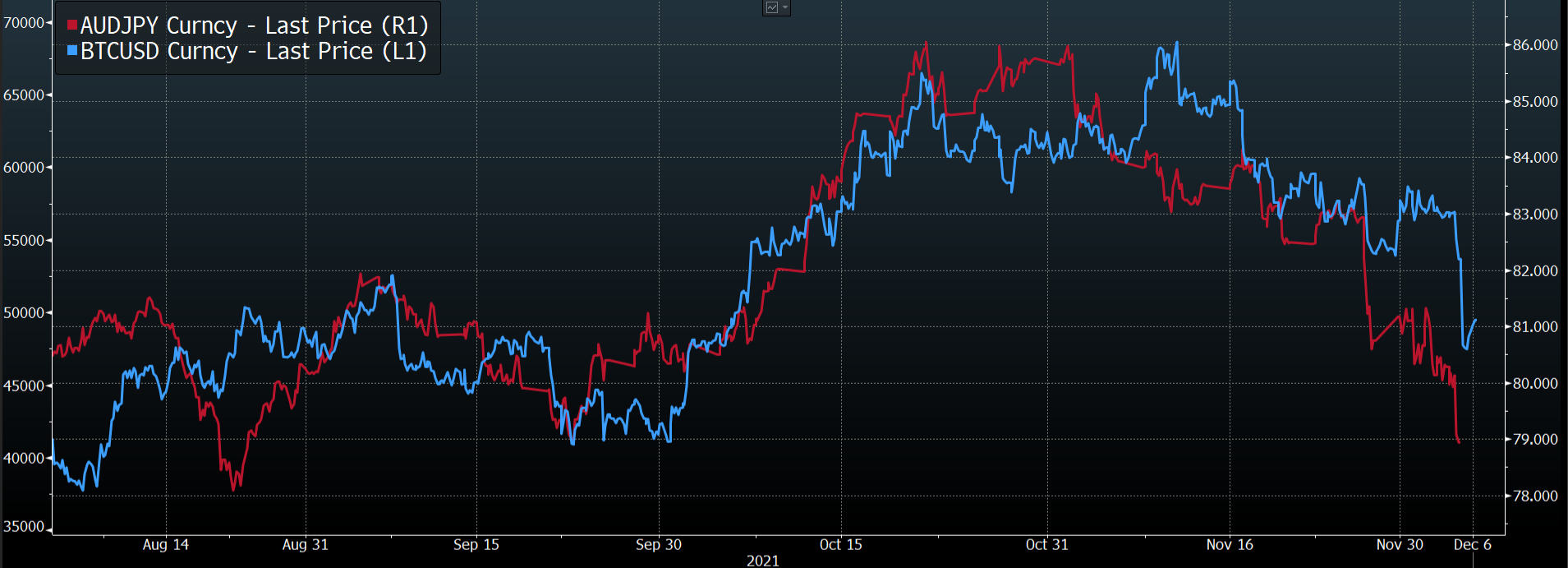Cryptocurrency outlook 2022
.png)
2021 has been a breakout year for cryptocurrencies, with its dramatic rise through the ranks of popular culture seeing the asset class move from the fringes of society to a focal point within political and investment-based discussions.
In the space of a year, we’ve seen the industry mature towards becoming a genuine asset class – transitioning for many into an investment, as opposed to a punt.
Despite this, the industry is still only 12 years old – an infant when compared to stock markets (229 years) and gold (around 5000 years).
In the spirit of tomorrow's (8 December 2021) commencement of the greatest sporting series in the world - The Ashes: The industry can be viewed as still very much in the first session on day one.
The year 2022 should be an equally important one in the development of the industry, where institutional involvement, regulation, and inflation/interest rates will drive its trajectory.
So, as the topic of today’s note, we will go through our 2022 cryptocurrency outlook, recapping the events of 2021, going over the main narratives to watch over the next year, and our market prediction for 2022.
The year that was
The year of 2021 has seen the rapid normalisation of cryptocurrencies, where it has now become a regular part of asset allocation conversations and a mainstay in popular media, as well as becoming an increasingly important topic within political spheres.
Investor access to the space through traditional financial infrastructure has improved with the launch of listed crypto products, with the USA, Canada, Brazil and Dubai (and soon Australia) all adding ETF’s, and seeing significant capital inflow as a result – with BITO:NASDAQ experiencing the fastest ETF launch in history, hitting US$ 1 billion in FUM in only two days.
Enhanced institutional participation has also seen the introduction of cryptocurrency-related services. Payments providers like Mastercard, Visa, PayPal and Square are all investing heavily into the space, and larger financial institutions like BNY Mellon, Standard Chartered and Citibank are also getting involved.
As of 6 December 2021, the total cryptocurrency market capitalisation has grown 199% to US$2.3 trillion. DeFi also continues to grow, its Total Value Locked (TVL) increasing by 290% to US$ 100.95 billion (Source: DeFi Pulse).
NFT’s (Non-Fungible Tokens) have also exploded in popularity, seeing celebrity endorsement from the likes of Shaquille O’Neal, Snoop Dogg and Mark Cuban. And trading volume has now hit around US$10.7 billion in the third-quarter.
The Metaverse also emerged as a major flashpoint, where the cryptocurrency industry could play a key role through its ability to act as the native currency of the internet.
Bitcoin’s share of the overall market reduced, as the above alternative use cases of cryptocurrencies began to pick up steam.

Source: Coinmarketcap
What will define the market over the next year?
Given the nascency of the industry and the rapid pace at which it moves, it is difficult to ascertain what variables will be most important over the next year.
However, from the markets current position, three variables stand out as the most likely to shape 2022, being;
- Institutional involvement
- Regulation
- Inflation and Central Bank policy
Institutional investment
Increased institutional investment has been the most important component within the normalisation of cryptocurrency and will continue to play a large role in capital flows and market sentiment.
This institutional investment has come from multiple angles, including the funds management space, through famous hedge fund managers like Ray Dalio, Paul Tudor Jones and Stanley Druckenmiller, major pension and insurance funds like Mass Mutual, and inclusion on corporate balance sheets of Microstrategy (NASDAQ: MSTR), Square (NYSE: SQ) and Tesla (NASDAQ: TSLA).
While the size of their investments has not necessarily been market moving – it is the very concept that the best and brightest in their fields are recognising the value within cryptocurrency.
While a number of companies have already invested into the space, most are still constrained by investment mandates and a lack of trusted custodial/administrative services.
As time goes on and education levels improve, institutions will become more comfortable and enable the inclusion of cryptocurrencies within investment mandates, which will unlock trillions in potential capital – mainly in the pension fund industry.
The inclusion of cryptocurrencies within these mandates would provide a unique source of diversification, and in the case of Bitcoin – an alternative to gold as an inflation hedge asset.
This movement is central to the investment thesis of Cathie Wood from Ark Invest, who believes Bitcoin valuations will go to US$500,000 should “institutional investors move into Bitcoin and allocate 5% of their portfolios”.
When it comes to custodial/administrative services, a perfect example of the issues faced by many companies is the same that we experience at Mason Stevens. We are able to offer access only to those cryptocurrencies offered in the listed equity market and aren’t able to directly hold cryptocurrencies given our custodian, National Australia Bank, is yet to offer this service.
The development of these custodial services is not a question of if, but of when – with most major financial institutions working towards developing these capabilities, with regulators also looking to implement frameworks which ensure investor protection.
Regulation
Regulation has loomed over the cryptocurrency industry since its inception and will likely continue to do so until a point where the industry matures.
It is one of the most important topics to be aware of in the space, and is something we have covered in the past.
The task at hand for regulators is complex – too much regulation and potentially world-changing innovation will be stifled, but too little regulation and investors/consumers may be put at risk.
Over the past year, US regulators have drawn battle lines in the areas of DeFi, and whether cryptocurrencies should be constituted as securities, with these areas set to drive the agenda in 2022.
Their battle against DeFi is still in the early stages, however, it looks to be the area in which the SEC will dedicate the majority of its time to.
DeFi is another topic we have covered in the past – but as a quick recap, regulators are most concerned about this space given it involves the provision of financial services which would normally be provided by licensed financial institutions – like banks and securities exchanges.
How regulators will attempt to build a regulatory framework is another question altogether – how are you to regulate a protocol (which can often be owned entirely by its users) that simply connects two anonymous investors, and enables them to lend/borrow/transact with each other.
Whilst DeFi only makes up a portion of the entire cryptocurrency market, any harsh regulatory action imposed against industry participants will likely cause market-wide negative sentiment.
The SEC have also been in the midst of a year-long legal battle with Ripple– claiming that XRP (the token of Ripple and the sixth-largest by market cap) should be categorised as a security.
Should the SEC win, XRP tokens would see significant markdowns given the fines and enhanced compliance costs it would be subject to, with the win also enabling the SEC to have precedence in pursuing other cryptocurrencies which may be deemed securities.
This would likely see enhanced volatility, where the majority of cryptocurrencies currently operate as either currencies, or commodities, and therefore have much looser regulatory requirements.
However, at the moment it seems very likely that the SEC will lose, where a Ripple win will likely see positive market wide sentiment given the regulatory clarity offered for many parties within the industry.
Inflationary environment and central bank policy
As with every risk asset, inflation and central bank policy has been a driving factor in the valuations of cryptocurrencies over the past year.
Over the past few months we have seen a change in the inflation narrative, where central banks have changed tact and admitted that current inflationary pressures are more than just transitory.
As a result, we have seen central banks around the world bring forward their tapering timelines, as well as markets pricing multiple rate hikes in most developed markets in 2022.
On the one hand, increasing inflationary expectations can be viewed in part as positive for Bitcoin, given its growing role as an inflation hedge asset, and a competitor to gold.
However, in a rising interest rate environment, those assets at the pointier end of the risk spectrum will be impacted most – the position which cryptocurrencies currently occupy.
A flattening yield curve will also see more conservative market positioning, which has the potential to see a reduction in capital flow into the cryptocurrency industry.
Where will valuations go?
Historical bull/bear cycles
It is difficult to provide a price prediction for an asset which is valued primarily on the basis of speculation.
However, it wouldn’t be an outlook without providing some form of forecast.
Since its inception, Bitcoin, and by extension, the cryptocurrency market, has operated in a dramatic 4-year boom and bust cycle – where the “halvening” predicated the timing of bull runs.

Source: Bloomberg, Mason Stevens (green lines indicating “halvening”)
The “halvening” is the point at which the Bitcoin protocol automatically halves the block rewards to miners – which occurs every 210,000 blocks mined (approximately every 4 years).
This is part of Bitcoin’s “monetary policy”, where the amount of block rewards (new supply to the market) will halve every 4 years until around February 2140, when all 21 million Bitcoin’s have been distributed.
The idea behind markets rallying on the back of these halving events is simply a demand/supply equation – where the new Bitcoin supply to the market is cut in half.
The concept of the halving now carries less value – where miners have become more capitalised (a product of their listing on exchanges, strong balance sheets and greater access to financing) – where they are not required to sell all of the bitcoin they mine instantly, leading to the removal of a formerly consistent stream of supply to the market.
Along with this, institutional involvement has meant that future events – like upcoming halving’s – are priced in more efficiently to markets, reducing the amount of volatility over time.
As a result, there is a possibility that we see the removal of the 4-year bull/bear cycle altogether – and at the least, a reduction in its magnitude.
A more mature market
When it comes to market dynamics, we can say with a reasonable amount of certainty, that we expect to see reduced volatility in the market, and increased correlation against traditional financial markets.
This may mean that we won’t see the outsized returns that we have seen over the past decade, but at the same time, it is highly unlikely that we see episodes of 80%+ drawdowns.
Reduced volatility
The landscape now in comparison to previous bull runs is markedly different.
Over the past two years, the proportion of institutional investment has increased significantly, as well as the number of overall investors – leading to greater market efficiency and more rational market behaviour.
In the past, markets were vulnerable to manipulation, as well as irrational behaviour spurred on by leverage and a lack of investment nous.
Now, the dispersion of Bitcoin is more decentralised – reducing the power of individual actors and enabling a wide variety of institutional and “smart money” players to correct market mispricings.

Source: Glassnode
Moreover, the liquidity providers within markets have improved in quality, where greater incentives have spawned improved market-making/algorithmic trading methods.
Along with other buy-side players, these liquidity providers are able to backstop markets when mispricings may occur.
Greater correlations
Over the past year, we have seen the cryptocurrency industry mature towards becoming a genuine asset class.
This has been reflected in the form of the development of correlations, where we now see strong correlations between Bitcoin and AUD/JPY (one of the most accurate indicators of risk sentiment).

Source: Bloomberg
Correlation between the S&P 500 and Bitcoin have also emerged, further reflecting how Bitcoin has been used as a vehicle to express the risk sentiment and market positioning.
The development of these correlations is important – as it reflects the integration of Bitcoin (and cryptocurrencies) into the development of portfolios.
Day 1, First Session
Despite the progress which the cryptocurrency industry has made over the past few years, it is still within its infancy and has a multitude of obstacles to overcome.
2022 will arguably be the industry’s most important year to date – however, it will likely look quite different to previous years.
Volatility within the Bitcoin market is likely to be lower as institutional involvement improves market efficiency – bringing a semblance of the rule to the wild, wild, west of financial markets.
In the event of a market downturn, this will lead to a significantly reduced likelihood of the nightmarish drawdowns of yesteryear, where markets may only fall a measly 50% - as stock markets can - as opposed to the 80-90% seen in previous bear markets.
“Altcoins” (cryptocurrencies other than Bitcoin) will still have relatively higher levels of volatility given the relatively immature nature of their investor bases, however, they offer opportunities for outperformance through exposure to emerging thematics like Defi, Metaverse, NFT’s and innovative layer 1 protocols.
Never miss an insight
Enjoy this wire? Hit the ‘like’ button to let us know. Stay up to date with my content by hitting the ‘follow’ button below and you’ll be notified every time I post a wire.
Not already a Livewire member? Sign up today to get free access to investment ideas and strategies from Australia’s leading investors.
4 topics
.png)
Mike is an Investment Analyst at Mason Stevens, where he is responsible for a broad range of investment management activities, primarily focused on the firm’s fixed income product offering and wealth services. Mike has a strong interest and...
Expertise
.png)
Mike is an Investment Analyst at Mason Stevens, where he is responsible for a broad range of investment management activities, primarily focused on the firm’s fixed income product offering and wealth services. Mike has a strong interest and...
.png)